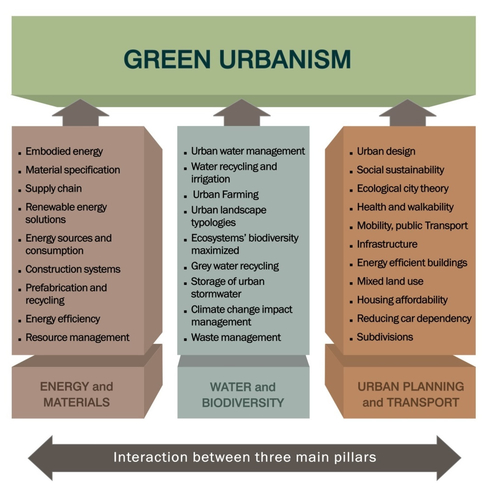Green Urbanism is by definition interdisciplinary; it requires the collaboration of landscape architects, engineers, urban planners, ecologists, transport planners, physicists, psychologists, sociologists, economists and other specialists, in addition to architects and urban designers. Green Urbanism makes every effort to minimize the use of energy, water and materials at each stage of the city’s or district’s life-cycle, including the embodied energy in the extraction and transportation of materials, their fabrication, their assembly into the buildings and, ultimately, the ease and value of their recycling when an individual building’s life is over. Today, urban and architectural design also has to take into consideration the use of energy in the district’s or building’s maintenance and changes in its use; not to mention the primary energy use for its operation, including lighting, heating and cooling. The following diagrams identify the inter-connectedness of issues impacting on urban development decisions.
Bron: Lehmann, S. 2011. What is Green Urbanism? Holistic Principles to Transform Cities for Sustainability. Intechopen. DOI: 10.5772/23957
